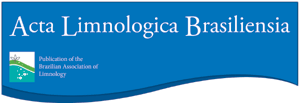Resumo
Objetivo Neste trabalho são abordados alguns assuntos relacionados com a construção e adaptação do índice da assembleia de peixes em reservatório (IAPR).
Método O passo a passo da construção do índice multimétrico adaptado para o sistema de reservatórios em cascata do Rio Tietê (SP, Brasil) é apresentado como caso de estudo e a comparação entre critério de pontuação discreto e continuo é discutida.
Resultados As principais questões relacionadas com a adaptação de índices multimétricos para reservatórios são: i – questão de terminologia; ii- amostragem representativa da ictiofauna; iii – condições de referência. A construção do Índice da Assembleia de Peixes em Reservatório (IAPR) para o sistema de reservatórios em cascata do Rio Tietê é descrita em sete passos e o critério de pontuação continua mostrou aumentar a precisão do índice em relação à pontuação discreta, especialmente no caso de ambientes mais degradados.
Conclusão O uso de critérios biológicos para avaliação das condições dos ecossistemas aquáticos é amplamente reconhecido e aceito pela comunidade cientifica. O crescente valor estratégico da água faz dos reservatórios importantes objetos de interesse cientifico e social, justificando a necessidade de definir ferramentas adequadas de avaliação e monitoramento. Entre as várias ferramentas disponíveis, a abordagem multimétrica é atualmente uma das mais populares. Os resultados observados mostram a validade da abordagem também para ambientes artificiais, permitindo auspiciar a sua incorporação em programas oficiais de biomonitoramento no Brasil.
Palavras chaves: biomonitoramento; ambientes artificiais; área tropical; ictiofauna

 Abordagem de estudo e passo a passo para o desenvolvimento de um índice multimétrico baseado em peixes para reservatórios: apresentação de um estudo de caso de um sistema neotropical em cascata
Abordagem de estudo e passo a passo para o desenvolvimento de um índice multimétrico baseado em peixes para reservatórios: apresentação de um estudo de caso de um sistema neotropical em cascata Thumbnail
Thumbnail
 Thumbnail
Thumbnail
 Thumbnail
Thumbnail
 Thumbnail
Thumbnail
 Thumbnail
Thumbnail




